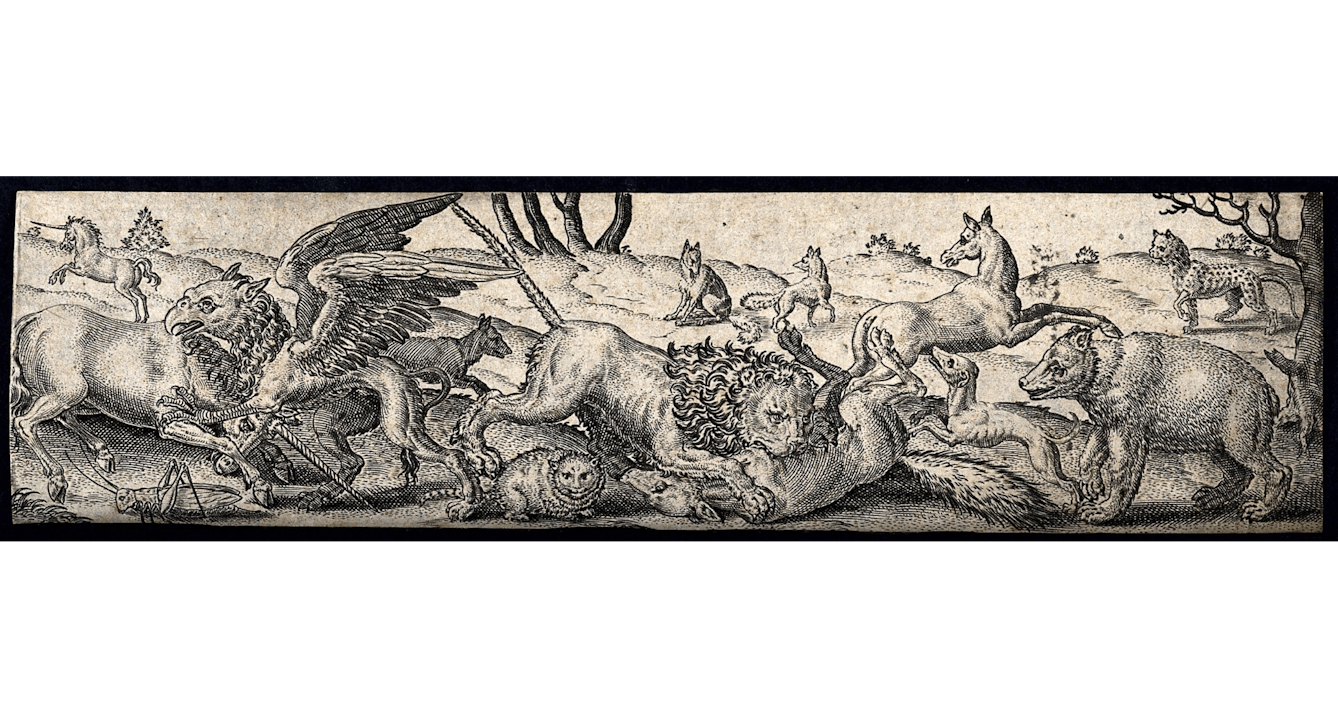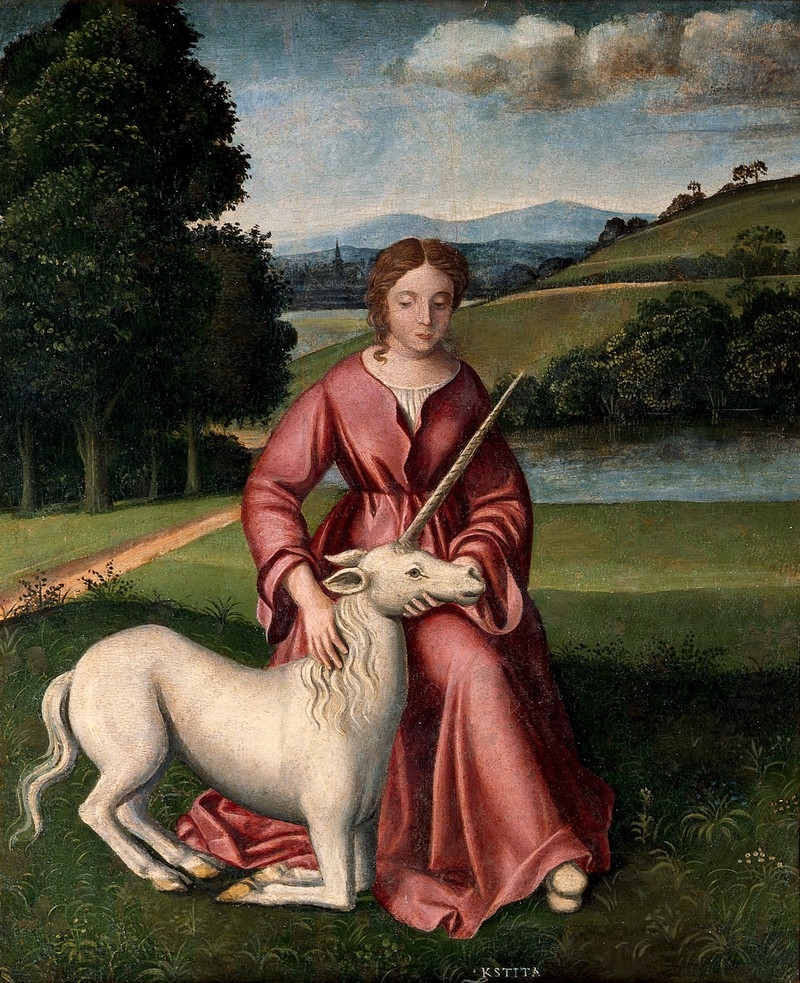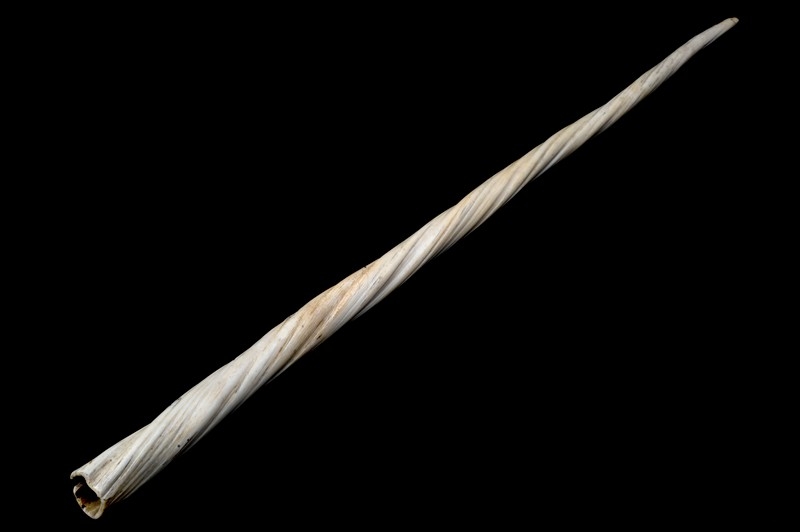From 1908 to 1995 the pharmaceutical company created by Henry Wellcome and Silas Burroughs had a unicorn as its logo - why? Discover the unlikely connection between pharmaceuticals and unicorns.

If you have ever visited the Medicine Now gallery you have probably noticed that an entire wall is dedicated to drawing feedback cards made by our visitors. On the back of each card is a list of words related to Wellcome Collection for people to take inspiration from. Amongst them is the word unicorn: it is one of the most popular on the cards. I wondered how unicorns could be linked to the collection or the Wellcome Trust when I first started working here. After looking a little more closely, it turned out to be pretty obvious.
I am sure we’re all familiar with unicorns from fairy tales, cartoons, films and heraldry: from the books ‘The Little White Horse’, ‘Harry Potter’ and ‘The Flight of the Horse’, to the cartoons ‘My Little Pony’, ‘Dungeons and Dragons’ and ‘Thundercats’ to the films ‘The Last Unicorn’, ‘Legend’, ‘Blade Runner’ and ‘The Chronicles of Narnia’. There’s even a very addictive game. Unicorns have often featured in literature and art for centuries but they were first mentioned in antiquity in ancient Greek writings. However, it wasn’t mythology writings as one might expect, but in natural history books; the ancient Greeks were convinced by the authenticity of the creature.
The earliest known mention of unicorns is by Ctesias, a Greek physician from the 5th century BC, who placed their origin in India. Ctesias spent time at the court of Darius in Persia (what is now Iran) where he heard many stories from Indian travellers about a mystical animal. Described as a creature with a white horse-like body, dark blue eyes and a single, colourful horn on the forehead about 43 centimetres long (1’6”). An animal so powerful and fleet of foot that no other could overtake it.

A fight among animals: a unicorn is fighting a griffon and a lion is killing a fox while other animals are fleeing or watching on.
It was believed the animal’s strength resided in its horn which is why, Ctesias tells us, it was common for the people at that time to grind unicorns’ horns to prepare elixirs and remedies. A tradition paralleled by what is currently happening in Africa and Asia where rhinos are poached for their horns, which some people believe to have medicinal properties (as illustrated in the work of Brent Stirton, runner up 2012 for the Wildlife photojournalist Award at the Natural History Museum).
Unicorns are also mentioned in the works of Strabo and Pliny the Younger. In the Bible, an animal called Re’em in the Hebrew version is often mentioned for its strength and has been translated to “unicorn” in the King James Version.
The popularity of unicorns in religious and natural history literature was such that, by the Middle Ages and the Renaissance, unicorns were a symbol of purity and chastity and they were very common in paintings, engravings and tapestries often represented by a white unicorn resting its head on a young virgin’s lap.

Chastity (a virgin and a unicorn). Oil painting by a follower of Timoteo Viti.
As a result of being a symbol of purity, unicorns, specifically their horns, were believed to possess the power to heal a large variety of diseases; drinking from a unicorn’s horn would allegedly purify filthy water. For these reasons, unicorns’ horns were one of the most valuable things a king could possess throughout the Middle Ages and into the Renaissance.
This raises a question: what were kings and physicians using in place of unicorns’ horns? In most cases narwhals‘ horns were passed off as unicorns’. As was the case with Goa stones, it was common in ancient times to “adjust” remedies for the greater good. The most important thing was to believe that you were being administered the real thing, what we would call the placebo effect in modern medicine.

This tusk (a canine tooth) is from a small whale called a narwhal. For centuries such tusks, which could grow several metres in length, were claimed to be from the unicorn. As powdered unicorn horn was used in a number of different medical preparations these tusks became highly valued and the whales heavily hunted.
A few years ago a “unicorn” or, more precisely, a single-horned deer was born in a wildlife reserve in Italy. This re-launched the debate around the authenticity of unicorns. Is it possible that such genetic modifications were witnessed in antiquity, providing an explanation for the myth? Or was there really a time when creatures such as unicorns (and even mermaids and dragons) existed?
About the author
Muriel Bailly
Muriel Bailly is a Visitor Experience Assistant at Wellcome Collection
